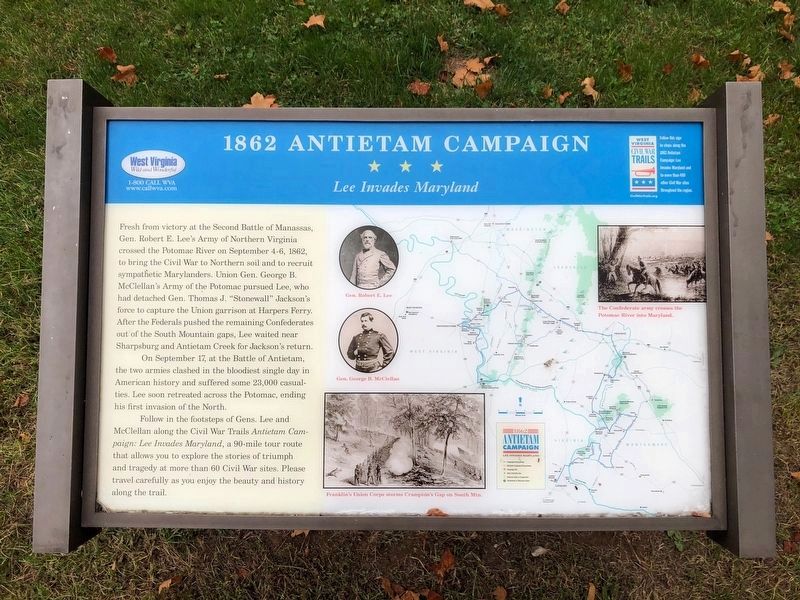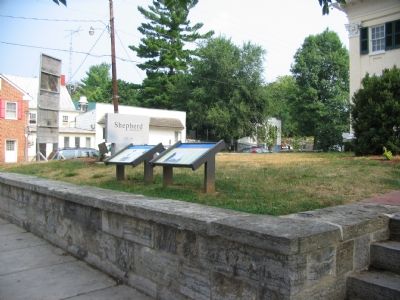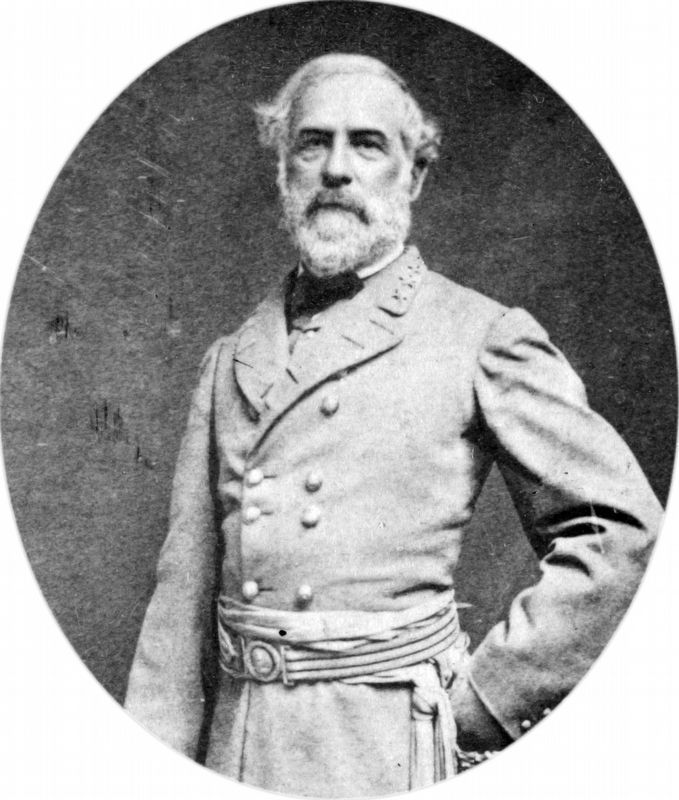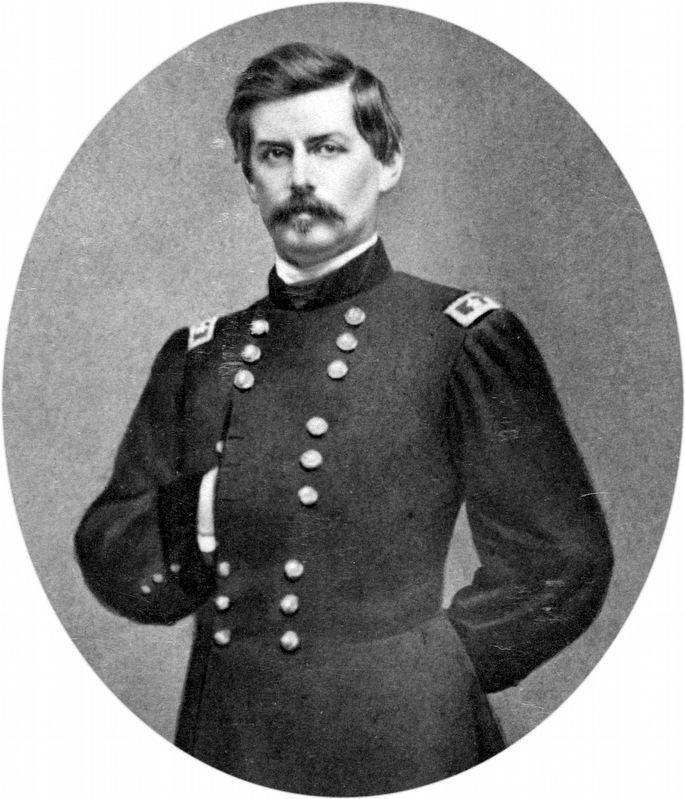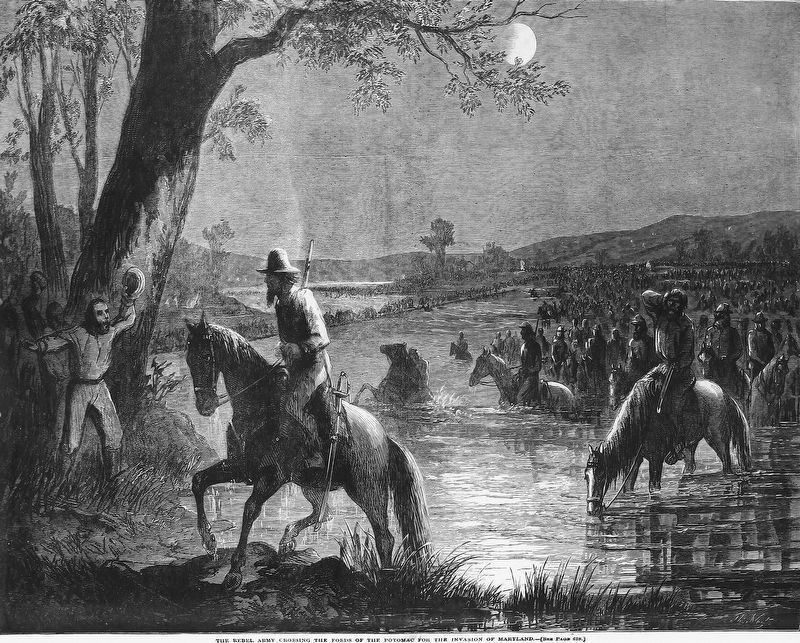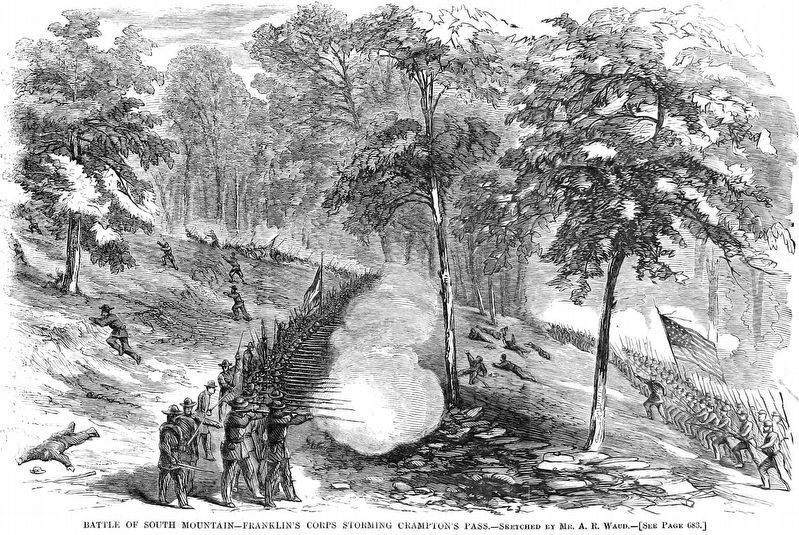Shepherdstown in Jefferson County, West Virginia — The American South (Appalachia)
1862 Antietam Campaign
Lee Invades Maryland
Fresh from victory at the Second Battle of Manassas, Gen. Robert E. Lee’s Army of Northern Virginia crossed the Potomac River on September 4-6, 1862, to bring the Civil War to Northern soil and to recruit sympathetic Marylanders. Union Gen. George B. McClellan’s Army of the Potomac pursued Lee, who had detached Gen. Thomas J. “Stonewall” Jackson’s force to capture the Union garrison at Harpers Ferry. After the Federals pushed the remaining Confederates out of the South Mountain gaps, Lee awaited Jackson’s return near Sharpsburg and Antietam Creek.
On September 17, at the battle of Antietam, the two armies clashed in the bloodiest single day in American history and suffered some 23,000 casualties. Lee soon retreated across the Potomac, ending his first invasion of the north.
Follow in the footsteps of Gens. Lee and McClellan along Maryland Civil War Trail’s Antietam Campaign: Lee Invades Maryland, a 90 mile tour route that allows you to explore the stories of triumph and tragedy at more than 60 Civil War sites. Please travel carefully as you enjoy the beauty and history along the trail.
Erected by West Virginia Civil War Trails.
Topics and series. This historical marker is listed in this topic list: War, US Civil. In addition, it is included in the West Virginia Civil War Trails series list. A significant historical month for this entry is September 1755.
Location. 39° 25.852′ N, 77° 48.342′ W. Marker is in Shepherdstown, West Virginia, in Jefferson County. Marker is at the intersection of German Street (West Virginia Route 230) and King Street (West Virginia Route 480), on the right when traveling west on German Street. In front of McMurran Hall, Shephard College. Touch for map. Marker is at or near this postal address: 113 E German St, Shepherdstown WV 25443, United States of America. Touch for directions.
Other nearby markers. At least 8 other markers are within walking distance of this marker. Shepherdstown (here, next to this marker); Shepherd State Teachers College (here, next to this marker); War Memorial (a few steps from this marker); American Revolutionary War Memorial (a few steps from this marker); R.D. Shepherds Town Hall (a few steps from this marker); Pack Horse Ford Chapter, D.A.R. (a few steps from this marker); Moulder Hall (within shouting distance of this marker); McMurran Hall (within shouting distance of this marker). Touch for a list and map of all markers in Shepherdstown.
More about this marker. This is an example of the standard marker used for Civil War Trails - Antietam Campaign sites, and is duplicated in several locations in Maryland, Virginia, and West Virginia. The marker features portraits of Gens. Robert E. Lee and George B. McClellan. Newspaper drawing depict Union troops storming Crampton’s Gap and Confederate forces crossing the Potomac. A map indicates important sites related to the Antietam Campaign.
Related markers. Click here for a list of markers that are related to this marker. Markers related to the 1862 Antietam Campaign in West Virginia
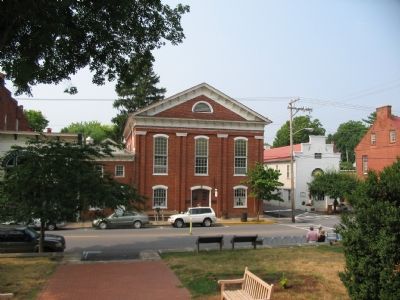
Photographed By Craig Swain, July 28, 2007
7. War Memorial Building
Located across the street from the markers, the War Memorial Building is operated by the Shepherdstown Men's Club and is one of many historic buildings in the city. The white building to the right is the International Organization of Odd Fellows Hall, which was used as a hospital in the aftermath of the Battle of Antietam.
Credits. This page was last revised on October 12, 2020. It was originally submitted on August 1, 2007, by Craig Swain of Leesburg, Virginia. This page has been viewed 1,894 times since then and 23 times this year. Photos: 1. submitted on October 12, 2020, by Devry Becker Jones of Washington, District of Columbia. 2. submitted on August 1, 2007, by Craig Swain of Leesburg, Virginia. 3, 4, 5, 6. submitted on September 5, 2018, by Allen C. Browne of Silver Spring, Maryland. 7. submitted on August 1, 2007, by Craig Swain of Leesburg, Virginia. • J. J. Prats was the editor who published this page.
